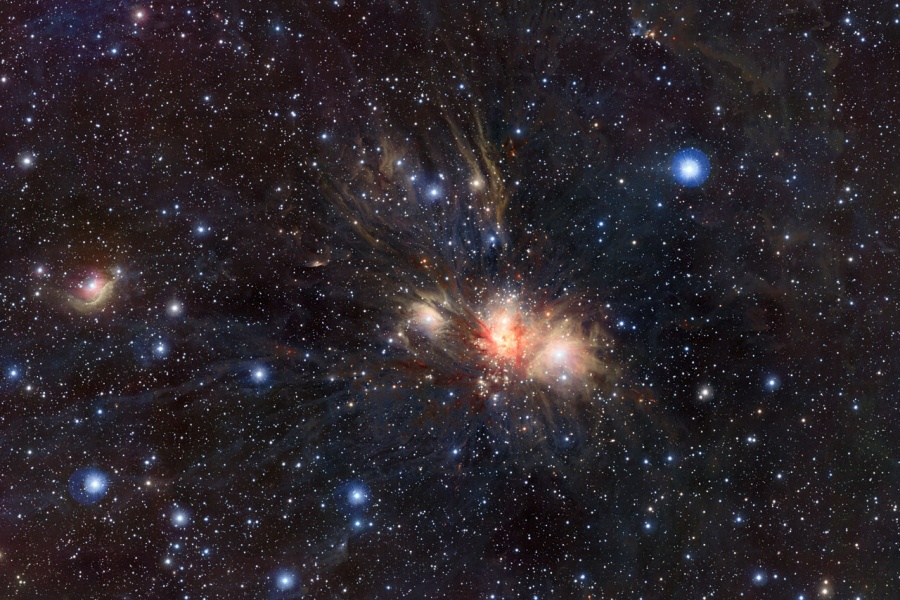I chose this photo as it seemed very relevant due to our recent studies of the electromagnetic spectrum and infrared telescopic instruments. This image was taken very near infrared in an attempt to get past the dust of NGC 2170 and see the formation of stars and newborn stars that would have otherwise been hidden. This active star forming region is called Monoceros R2 and is about 2700 lightyears distant. This picture shows the importance of infared and radio wave technology so that we can see through the interstellar dust that is opaque to visible light. With only visible light telescopes, we would have little information about the early stages of stellar formation. I'm pretty excited for ESO's current plans for a 42-metre E-ELT, the European Extremely Large Telescope, which will classify as optical/near infrared, to be built in the Atacama desert in Chile. Astronomers really know how to get crazy naming their telescopes, don't they?

No comments:
Post a Comment